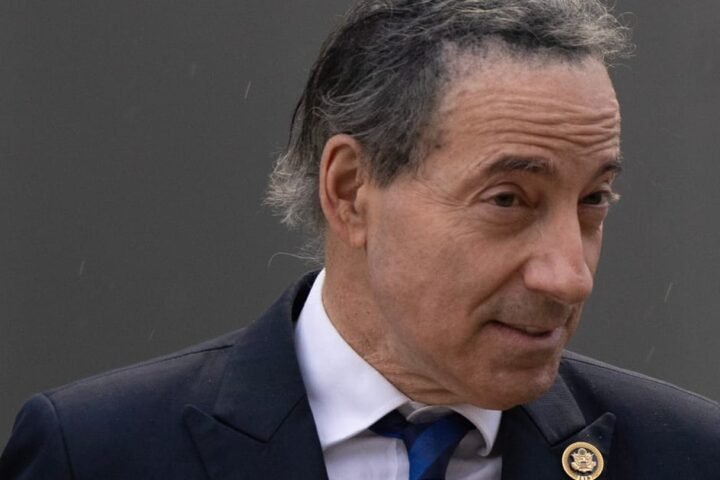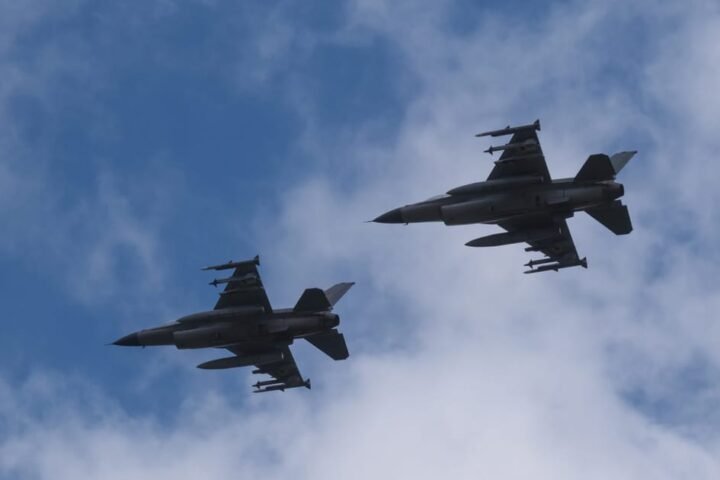- Battlefield Debut for China’s Arsenal: Pakistan’s successful use of Chinese J-10C jets and PL-15E missiles marked the first real-world combat test of Beijing’s next-gen military tech — and it delivered.
- Beijing’s Quiet Celebration: Chinese diplomats expressed “great happiness” over Pakistan’s shootdown of Indian warplanes — but privately scrambled to contain the fallout.
- India Hits Back with Tech Supremacy Claims: New Delhi claimed it bypassed Chinese-supplied air defenses in just 23 minutes, boasting superior jamming and drone strike capabilities.
- Trump’s Dubious Ceasefire Win: Donald Trump preemptively claimed credit for brokering a ceasefire before any side confirmed it — raising eyebrows in both Delhi and Islamabad.
- U.S. Sanctions and Strategic Anxiety: The Pentagon has sanctioned Chinese firms supplying Pakistan and is increasingly wary of Beijing’s expanding influence in the Indo-Pacific.
- Intel Windfall for China: Analysts say the clash gave China a valuable look into India’s drone warfare and electronic jamming tactics — a potential game-changer in future conflicts.
- Taiwan Tensions Foreshadowed: Chinese commentators linked the dogfight to Taiwan’s defenses, calling the clash a “rehearsal” for future Chinese confrontations with U.S. allies in Asia.
When Pakistan’s military commanders briefed Chinese diplomats last week about the stunning performance of Chinese-made J-10C fighter jets and PL-15E air-to-air missiles in shooting down several Indian warplanes — including French-made aircraft — the reaction in Beijing was one of measured satisfaction, according to The Washington Post. After years of multibillion-dollar investments in its defense industry, Beijing had finally seen its weapons perform in real battle — and succeed.
But the mood within China’s corridors of power swiftly transitioned from celebration to concern. Two individuals familiar with Chinese internal discussions told The Washington Post that officials immediately began weighing the potential geopolitical fallout of a military success that could further destabilize South Asia and undermine Beijing’s delicate balancing act with New Delhi.
As firefights raged across the Line of Control, Beijing and Islamabad were engaged in a flurry of high-level consultations. Chinese diplomats, alarmed by the prospect of an escalating conflict between the two nuclear-armed neighbors, scrambled to contain the diplomatic consequences. Their biggest concern: any triumphant showcase of Chinese military prowess risked provoking India at a time when Beijing is eager to project itself as a stabilizing force in a region increasingly polarized between Chinese and American spheres of influence.
This week, Chinese state media and government officials maintained a deliberately muted tone. They praised the reliability of Chinese defense equipment without explicitly drawing attention to Pakistan’s operational use. Meanwhile, Chinese social media — under tight state control — overflowed with nationalist pride, heralding what many viewed as China’s first real military “win” over Western-made weaponry.
New Delhi, for its part, released a statement on Wednesday pushing back hard on Pakistan’s claims. The Indian government asserted that it had “bypassed and jammed Pakistan’s Chinese-supplied air defense systems within just 23 minutes.” According to the Washington Post, India also emphasized that its retaliatory strikes had severely damaged six Pakistani military airfields, marking the most intense exchange of firepower between the two nations in decades.
While India has not confirmed the loss of any aircraft, visuals presented at a Monday press conference showed debris believed to be from Chinese PL-15E missiles. Pakistani Foreign Minister Ishaq Dar told Parliament that five Indian jets were downed, crediting the J-10C for the operation and noting that Chinese officials were “kept in the loop” throughout the confrontation. “Being a friendly nation, they expressed great happiness,” he said, as cited by Pakistani media.
If verified, this would be the first documented instance of the J-10C and PL-15E systems being used in direct combat — a fact that has not gone unnoticed in Washington.
In a high-profile move, former U.S. President Donald Trump claimed responsibility for brokering the ceasefire between India and Pakistan — announcing the deal even before either side had confirmed the cessation of hostilities. According to The Washington Post, Trump told reporters Monday that both sides agreed to end the fighting after the United States warned it would halt trade negotiations with them if the conflict continued. Indian officials have strongly refuted these claims, stating that no trade threats were issued and denying that Washington played any major role in the ceasefire process.
Nonetheless, the episode has highlighted Washington’s unease over the strengthening China-Pakistan axis. The United States has long viewed China’s military support to Pakistan — which now constitutes nearly 80 percent of Pakistan’s foreign defense imports — as a potential accelerant for regional instability. In September, the U.S. sanctioned several Chinese firms over their role in aiding Pakistan’s ballistic missile development.
The China-Pakistan strategic partnership, often described as “iron brothers,” has deepened in recent years not only in military terms but also via infrastructure and economic projects under the China-Pakistan Economic Corridor (CPEC), a key component of Beijing’s Belt and Road Initiative.
But China’s desire to flex its industrial muscle is constrained by geopolitical realities. Beijing remains wary of pushing India too far. Memories of the deadly 2020 Galwan Valley clashes, which left soldiers on both sides dead, still haunt relations between Asia’s two largest countries. That incident drove New Delhi closer to Washington, culminating in the 2022 U.S.-India agreement to co-produce fighter jet engines in India.
“For China, India is a very important relationship, even though they’re competitors,” said Dr. Nishank Motwani, senior fellow at the Australian Strategic Policy Institute. “It does not want to push India further into the U.S. orbit,” he told The Washington Post.
Motwani also emphasized the intelligence value China would gain from this recent skirmish. “This is the first time India’s been using offensive capability drones and electronic warfare systems to jam and suppress Pakistani assets,” he noted, adding that China will likely study Indian tactics and technological responses in detail — insights that Pakistan is expected to share with its key military supplier.
Meanwhile, the conflict has drawn the attention of defense watchers globally — not least because it provided the first real-world test of Chinese military systems against Western-made fighter jets such as the French Dassault Mirage and Rafale, used by India.
“If Pakistan’s equipment were to fail, that is egg in the face of the Chinese,” said Milan Vaishnav, director of the South Asia Program at the Carnegie Endowment for International Peace, in comments reported by The Washington Post. “Instead, Beijing can now point to proof of concept.”

China has largely stayed out of the limelight regarding Kashmir, but the use of its hardware — and the results thereof — have pulled it deeper into South Asia’s volatile security environment. More importantly, the battle appears to have reassured Beijing of its arsenal’s competitiveness, particularly as it prepares for more serious potential conflicts — including over Taiwan.
In recent years, Chinese J-10C jets have increasingly participated in air defense operations near Taiwan and in the South China Sea. They have also confronted U.S. and allied aircraft. Just last year, a J-10C reportedly fired flares in front of an Australian military helicopter operating in the Yellow Sea — a move that drew official protests from Canberra.
The Pentagon, under Defense Secretary Pete Hegseth, has reoriented its strategic priorities toward the Indo-Pacific, considering it the likeliest theater for a future high-intensity conflict. In April, the U.S. approved a $5.58 billion arms deal to sell 20 F-16s to the Philippines, prompting Beijing to accuse Washington of turning the region into a “powder keg.”
The skirmish between India and Pakistan — featuring Chinese jets and Western-made aircraft — was closely monitored by military analysts across the globe, offering them a preview of what a broader East-West confrontation might look like. Chinese commentators were quick to seize the moment. “The conflict between India and Pakistan is likely to be a rehearsal for the imminent collapse of Taiwan’s imported equipment,” tweeted Hu Xijin, former editor-in-chief of Global Times, the Chinese state-run nationalist tabloid.
For now, the guns have fallen silent. But the tremors from this clash — and the evidence of Chinese arms finding their footing in real combat — will be felt far beyond the snow-capped peaks of the Kashmir Valley. In Beijing, the war games are just beginning.










